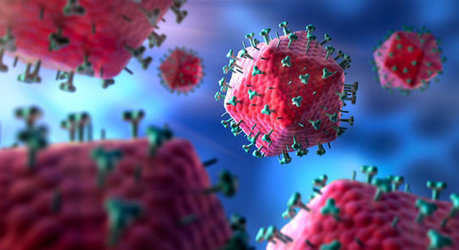Efforts to develop an effective HIV vaccine have repeatedly stumbled on one tough research strain, SIVmac239. Nicknamed the 'death star' strain, it has defeated multiple anti-HIV vaccine and antibody candidates, until now. Scientists have just beaten the 'death star' with a gene-therapy-style, nontraditional vaccine that prompts muscle cells to manufacture protective proteins.
A team at the Scripps Research Florida campus reports successfully beating that challenge. In a paper published in the journal Science Translational Medicine today, lead authors Michael Farzan, PhD, and Mathew Gardner, PhD, describe their destruction of the "death star" strain and another especially hard-to-fight strain, suggesting it may be possible to protect uninfected individuals from multiple forms of HIV.
Their nontraditional vaccine achieved another critical goal: durability. This means it protected the research animals from infection long-term, with a single inoculation, Farzan says. "We have solved two problems that have plagued HIV vaccine studies to date -- namely, the absence of duration of response and the absence of breadth of response," Farzan says. "No other vaccine, antibody or biologic protects against the two viruses for which we have demonstrated robust protection."
Conventional vaccine approaches typically use a piece of virus or other immunogen to activate an immune system response. Because HIV replicates and changes so quickly, that approach has proven challenging. Farzan's approach uses a safe virus to fight the dangerous one, and relies on muscle cells rather than immune cells to generate protective agents. Here's how: A harmless, lab-made adeno-associated virus (AAV) carries within it a protective protein designed by Farzan and colleagues to stop HIV infectivity. Called eCD4-Ig, the protective protein features two HIV co-receptors, CD4 and CCR5. The latter was discovered by Farzan and his team over a decade ago. Farzan's viral vaccine is injected into muscle. It "infects" the muscle cells, which causes them to produce the protective eCD4-Ig. During exposure to HIV, the HIV virus is attracted to eCD4-Ig. It binds, and then "undergoes conformational change prematurely, and it's no longer able to infect," Farzan says....
The study was published on July 24 in the journal Science Translational Medicine:
https://doi.org/10.1126/scitranslmed.aau5409



 Your new post is loading...
Your new post is loading...







